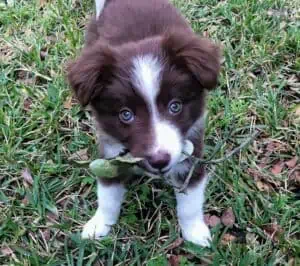Scottish Terrier Vs Border Terrier? Which one is better for you? Both of these breeds are popular in the UK, but which one should you choose? Keep reading to find out more about these two terrier breeds!
History Of Scottish Terrier
The Scottish Terrier, also known as the Aberdeen Terrier or simply the Scottie, was originally used to hunt vermin on farms. The breed dates back to at least 1436, with records referring to both a rough-haired and a smooth-haired variety.
The Scottish Terrier Club of England was founded in 1881, followed by the Scottish Terrier Club of Scotland in 1888. Scotties were then introduced to the United States in the early 1890s.
Despite their small size, these dogs have proven themselves fearless hunters and are beloved for their loyalty and tenacity. Today, they continue to make excellent companions and competitive show dogs. Their long history as a recognizable breed has earned them a special place in canine history.
Learn More: Why Is My Border Terrier Aggressive?

Differences Between Border Terriers Vs Scottish Terrier Breed
Border terriers and Scottish terriers, while both small terrier breeds have distinct differences in appearance and temperament. We have listed the differences here:
Temperament Comparison
When it comes to temperament comparison between Border Terriers and Scottish Terriers, both are affectionate dogs and popular breeds with the American Kennel Club.
However, the Border Terrier tends to be bolder and more inquisitive while the Scottish Terrier is feistier and more independent. They were originally meant for hunting purposes, but they thrive in both active lifestyles as well as loving companions in a family household. So when considering a new furry friend, consider researching the temperamental differences between these two wonderful dog breeds.
Learn More: Are Border Terriers Affectionate?
Life Expectancy
When it comes to choosing a furry family member, one important factor to consider is their lifespan. In general, smaller breeds tend to have a longer lifespan compared to larger breeds. However, there are breed-specific variations in life expectancy as well. Border Terriers have an average lifespan of 14-16 years while
Scottish Terriers only have a life expectancy of 12-14 years. This 4-year difference may seem small in the grand scheme of things, but it can make a big impact on the length of time you will have with your furry companion. Of course, proper nutrition and regular trips to the vet can also significantly increase a dog’s life expectancy no matter the breed.
Learn More: What Is The Temperament Of A Border Terrier?
Hot Weather Tolerance
Weather tolerance is an important factor to consider when choosing a dog breed. Both Border Terriers and Scottish Terriers have thick, rough coats, but the Border Terrier Club notes that the Double Coat is better equipped to handle harsh weather elements.
The outer coat of the Border Terrier is wiry and dense, offering optimal warmth and protection from rain and snow. In comparison, the Scottish Terrier’s outer coat has a softer texture, making them less able to withstand extreme temperatures.
While both breeds have gained popularity in recent years, those looking for a weather-tough companion may want to opt for the Border Terrier.
Read more: How Much Exercise Does A Border Terrier Need
Common Health Issues
Border Terriers and Scottish Terriers may look similar in size and appearance, but they do have some distinct differences when it comes to common health issues. Border Terriers, who benefit from early socialization, are generally considered to be a healthier breed.
Common health concerns for Border Terriers include hip dysplasia, epilepsy, and thyroid issues. Scottish Terriers, on the other hand, are more likely to face conditions such as gastrointestinal problems, von Willebrand disease, and joint disease.
Of course, all dogs can suffer from health issues regardless of breed; however, a good way to decrease the likelihood is by starting early socialization and carefully selecting a healthy breed. In conclusion, it’s important to consider common health issues when deciding whether a Border or Scottish Terrier is the right fit for you and your family.
Learn more: Are Border Terriers Good With Cats?
Diet And Nutrition
Diet and nutrition are important factors in the overall health and well-being of any dog, but there may be some differences to consider when it comes to Border Terriers versus Scottish Terriers.
- Border Terriers have higher energy levels and therefore often do best with a high-protein diet, while Scottish Terriers tend to have lower energy levels and may require a diet lower in protein.
- Border Terriers can often be prone to weight gain and may benefit from portion control or weight management foods, while Scottish Terriers generally do not have this issue.
It’s important to consult your veterinarian for specific dietary recommendations for your pet, but keep in mind that breeds can play a role in determining the best nutrition plan.
Reproducibility
Scottish Terriers have an average reproductive cycle compared to other dog breeds. Their first heat period, known as proestrus, lasts about 9 days and is marked by swelling and bloody discharge. During estrus, which lasts approximately 3-11 days, the female is receptive to mating.
After mating, the diestrus period begins and lasts for about 14 days before entering a resting period called anestrus. Scottish Terriers typically have litters of 2-5 puppies. It’s important for Scottish Terrier owners to carefully plan to breed with their veterinarians to ensure proper health and well-being for the mother and puppies.
On the other hand, Border Terriers typically go through a four-part reproductive cycle: proestrus, estrus, diestrus, and anestrus. During proestrus, females begin attracting males and may experience swelling of the vulva and bloody discharge.
Estrus is when a female is receptive to mating and can last anywhere from three to eleven days. Diestrus occur around day fourteen and are marked by a decrease in discharge and the return of the vulva to normal size.
Anestrus is the time between heat cycles, which usually lasts around six months. Border Terriers typically have litters of 2-8 puppies. Understanding this reproductive cycle can help Border Terrier owners plan breeding or prevent unwanted pregnancies.
Working Dog Comparison
The Scottish Terriers and Border Terriers are both sturdy, small breeds with impressive work ethics. However, when it comes to selecting a dog for service purposes, these breeds have their limitations.
Scottish Terriers tend to be independent and strong-willed, making them better suited for hunting or agility sports. Border Terriers have an equally strong drive for work, but their smaller size limits their ability to participate in certain types of service work. In comparison, breeds like German Shepherds and Labradors are better choices for police and search and rescue work due to their larger size, trainability, and strength.
While Scottish Terriers and Border Terriers make excellent companions and working dogs in the right tasks, they may not be the best fit for all types of service work.
Wrapping Up
Both Scottish terriers and border terriers make great pets. Ultimately, the best way to decide which breed is right for you is to meet some dogs of each breed and see which one you connect with more. Once you’ve found the right dog, all you need to do is provide plenty of love and attention—and maybe the occasional treat!—and you’ll have a friend for life.
















